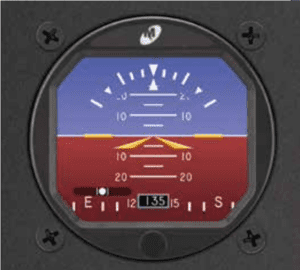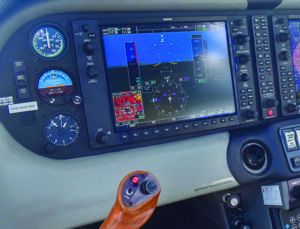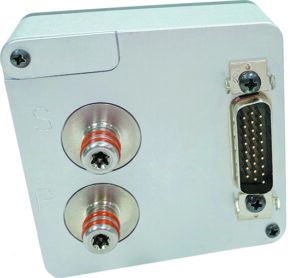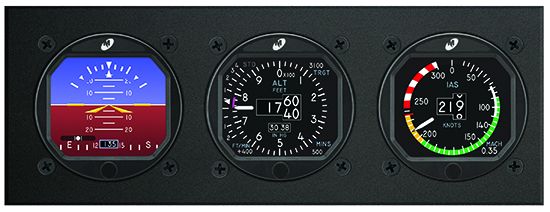In the early days of integrated big-screen glass—retrofit and OEM—2 1/4-inch backup flight instruments weren’t uncommon. They save panel real estate (essentially fitting into a round clock cutout), plus high-quality all-electric gyros seemed the perfect complement to Garmin’s G1000 and G2000 suite.
But with many of these instruments at the life stage requiring overhaul, thoughts turn to a more modern backup, while retaining a 2 1/4-inch mounting scheme.
Mid-Continent Instruments and Avionics has just the replacement with its MD23-series Flex instruments. Thanks to high-level certified software and ultramodern displays, they take backup flight instruments to a higher level. For many applications, we think the Flex line makes better sense than spending big on overhauling round-gauge mechanical instruments and iron gyros.
MULTIPURPOSE APPLICATIONS

That was the design goal for the MD23 Flex instrument from the beginning. Mid-Continent Instruments and Avionics set out to offer a highly customizable instrument that could serve a wide range of applications both for the aftermarket and OEMs.
But the idea behind the MD23 Flex 3Pack is to provide a modern replacement for either unrepairable or ancient-looking mechanical instruments. You know—the ones that stick out like a sore thumb in otherwise modern glass panels. And thanks to the MD23’s daylight-readable LCD display with high-resolution graphics, an MD23 instrument can be configured for just about any instrument configuration an installer needs, from attitude to airspeed to lithium-ion battery health monitoring and cabin environmentals.
The MD23 has a simple user interface with a single push-and-turn control knob. There’s no touchscreen, but that might not be practical for a small display nestled in a 2.25-inch round bezel. The MD23 is certainly a space and weight saver at 0.4 pounds and only 1 inch deep. Check that against many full-sized electric gyros that might eat close to 8 inches or more of space behind the panel, while weighing several pounds.
TIGHT ON QUALITY

The MD23 is built to extremely high FAA and RTCA standards with DAL (Design Assurance level) A certification. There’s also FAA TSO for a wide variety of functions.
And while the Flex 3Pack is one (of many) applications where the MD23 might stand alone as a backup, these instruments are highly interfaceable thanks to a generous I/O potential. There’s low- and high-speed ARINC 429, RS-232/RS-422/485 serial data, plus analog and discrete data inputs. There’s also temperature and absolute and differential pressure data.
The MD23 accepts 10-32 VDC input voltage, making it a player for a wide variety of aircraft. Each instrument has field-upgradable software and is configured via a standard USB-A port on the rear chassis.
TYPICAL APPLICATIONS
Since the potential for a single MD23 is almost endless (with three different available versions for flight instrument configurations), and there’s the ability for custom build/configurations, the Flex 3Pack setup represents the latest ultramodern suite of backup flight instruments. Aside from panels where 2-inch mechanical backups were equipped as standard to big-screen integrated glass, the MD23’s ability to save panel space is a huge option for panels where space is tight. Unlike the company’s self-contained MD-302 SAM backup EFIS (starting at $10,600), these are independent instruments that can be placed wherever there’s room for a 2-inch instrument—vertical, horizontal or in different areas of the panel. But one major application might be the replacement of aging mechanical 2-inch flight instruments, where overhaul, repair and component pricing have risen dramatically because of supply chain issues.

“We looked at our own airplanes and we looked across the market and saw that an AHARS-equipped MD23 is a slam-dunk replacement for the popular 2-inch Jet- and Lifesaver-series attitude gyros,” said Matt Harrah, Mid-Continent Instruments and Avionics SVP of technology and products. The same can be said for compact mechanical airspeed indicators and altimeters, where supply issues are hitting hard. You need to realize that a lot of these small mechanical counter drum-style altimeters and vintage airspeed indicators have tech (some of it military) dating back to the 1960s. But the Flex digital counter drum encoding altimeter (MD23-215) is a huge leap forward, with user-selectable vertical speed indications and a 6-second vertical trend display—proving just how much you can do with digital architecture. The same can be said for the Flex digital airspeed indicator, with user-configurable range markings, Mach/MMO indication and true airspeed and groundspeed display. The Flex MD23-342 digital attitude indicator can be used as primary or backup, displaying attitude, slip, turn rate and heading (in horizontal tape format at the bottom the screen) without the need for GPS input, an external magnetometer or speed input.
PRICING AND APPROVAL

There’s a large and growing AML-STC list for the Flex 3Pack—from Piper PA-46s (pistons and turbines) to Beech Barons and twin Cessnas. List pricing for the 2-inch Flex digital 3Pack, which includes the attitude indicator, airspeed indicator and counter drum altimeter, is $15,000. Individually, the attitude indicator is $6500 and the airspeed and altimeter instruments are $5500 each.
Visit www.mcico.com.





